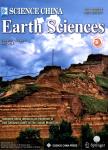Changes in the patterns of inorganic nitrogen and TN/TP ratio and the associated mechanism of biological regulation in the shallow lakes of the middle and lower reaches of the Yangtze River
Changes in the patterns of inorganic nitrogen and TN/TP ratio and the associated mechanism of biological regulation in the shallow lakes of the middle and lower reaches of the Yangtze River作者机构:Donghu Experimental Station of Lake Ecosystems State Key Laboratory of Freshwater Ecology and Biotechnology of ChinaInstitute of Hydrobiology Chinese Academy of Sciences Wuhan 430072 China Donghu Experimental Station of Lake Ecosystems State Key Laboratory of Freshwater Ecology and Biotechnology of ChinaInstitute of Hydrobiology Chinese Academy of Sciences Wuhan 430072 China Donghu Experimental Station of Lake Ecosystems State Key Laboratory of Freshwater Ecology and Biotechnology of ChinaInstitute of Hydrobiology Chinese Academy of Sciences Wuhan 430072 China Donghu Experimental Station of Lake Ecosystems State Key Laboratory of Freshwater Ecology and Biotechnology of ChinaInstitute of Hydrobiology Chinese Academy of Sciences Wuhan 430072 China
出 版 物:《Science China Earth Sciences》 (中国科学(地球科学英文版))
年 卷 期:2006年第49卷第Z1期
页 面:126-134页
核心收录:
基 金:jointly supported by the Chinese Academy of Sciences(Grant No.KZCXI-SW-12) the National Natural Science Foundation of China(Grant No.30225011)
主 题:nitrate-nitrogen, ammonium-nitrogen, nitrite-nitrogen, shallow lakes, phytoplankton.
摘 要:The changes of NH3-N, NO3-N, NO2-N and TN/TP were studied during growth and non-growth season in 33 subtropical shallow lakes in the middle and lower reaches of the Yangtze River. There were significant positive correlations among all nutrient concentrations, and the correlations were better in growth season than in non-growth season. When TP0.1 mgL-1, NH3-N increased sharply in non-growth season with increasing TP, and NO3-N increased in growth season but decreased in non-growth season with TP. These might be attributed to lower dissolved oxygen and low temperature in non-growth season of the hypereutrophic lakes, since nitrification is more sensitive to dissolved oxygen and temperature than antinitrification. When 0.1 mgL-1TP0.035 mgL-1, TN and all kinds of inorganic nitrogen were lower in growth season than in non-growth season, and phytoplankton might be the vital regulating factor. When TP0.035 mgL-1, inorganic nitrogen concentrations were relatively low and NH3-N, NO2-N had significant correlations with phytoplankton, indicating that NH3-N and NO2-N might be limiting factors to phytoplankton. In addition, TN/TP went down with decline in TP concentration, and TN and inorganic nitrogen concentrations were obviously lower in growth season than in non-growth season, suggesting that decreasing nitrogen (especially NH3-N and NO3-N) was an important reason for the decreasing TN/TP in growth season. The ranges of TN/TP were closely related to trophic level in both growth and non-growth seasons, and it is apparent that in the eutrophic and hypertrophic state the TN/TP ratio was obviously lower in growth season than in non-growth season. The changes of the TN/TP ratio were closely correlated with trophic levels, and both declines of TN in the water column and TP release from the sediment were important factors for the decline of the TN/TP ratio in growth season.



